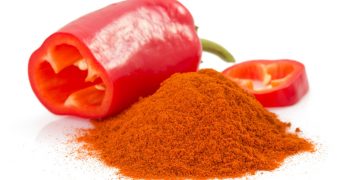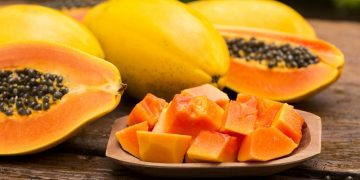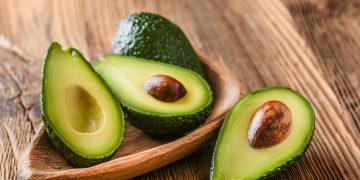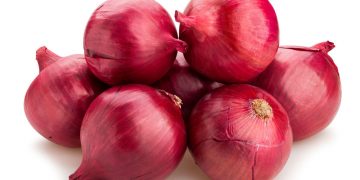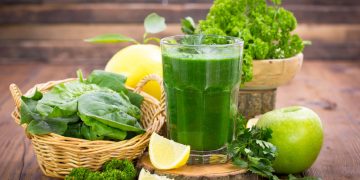I have actually worked with protein more thoroughly than the average person probably has. I was a chemistry major in college and took a very basic biochemistry course, which was my first real exposure to proteins. I had always heard of getting protein from food, but it became an entirely new experience to learn about it from such a detailed perspective: to learn about (and memorize!) the twenty amino acids. Finding out that it is not just the composition of the protein, but the arrangement in which it is folded is the crucial aspect of its function. During this one brief course, I never truly thought I would encounter proteins in anything more than my diet. But I was wrong.
In my first job after college, I worked in a pharmaceutical research and development lab running and analyzing data from a mass spectrometer. A mass spectrometer is basically an instrument that very precisely measures the mass of molecules, or in my case, of proteins. I learned a lot in the two years I worked there, but when I left the lab for a writing career, I figured I’d probably left my work with proteins behind as well… until I decided to write this article.
Proteins are comprised of a mixture of twenty different amino acids. These amino acids are the body’s primary building blocks. While most of these amino acids are found naturally in your body, the eight “essential” amino acids must be obtained through your diet. Since the body does not store protein in the same way as it does for fats and carbohydrates, you must continually replenish the supply of essential amino acids. All eight of the essential amino acids can be obtained in “complete” proteins, mostly animal-based proteins like beef, poultry, fish, and eggs. “Incomplete” proteins, found in fruits, vegetables, grains, nuts, etc.., are missing one or more of the essential amino acids. Two or more incomplete proteins can be combined (called “complementary” proteins) in order to mimic a complete protein by providing all of the essential amino acids. Using complementary proteins is especially important for vegetarian and vegan diets since most of the proteins in those diets are incomplete proteins.

As with many aspects of diet, moderation and variety seem to be the key components to managing your protein intake. At least for Americans, too little protein is not an issue, although if it was, according to the Iowa State University website, those affected would expect to suffer from decreased immunity, stunted growth, heart and respiratory failure, and possibly even death. However, the average American consumes more than the recommended intake of protein. One of the main disadvantages of getting too much protein in your diet is that a lot of protein sources are also high in saturated fat, which according to the American Heart Association (AHA) can lead to an increased risk of coronary heart disease, diabetes, stroke, and certain types of cancer. Some people are also not well equipped to deal with the excess protein in their system and develop a higher risk of kidney and liver diseases and osteoporosis.
A typical recommendation is consuming roughly 0.8 to 1.0 grams of protein per kilogram of body weight per day. Although, according to WebMD, some groups have special protein needs:
Pregnant and lactating
Pregnant women need approximately 10 grams more protein while lactating women need 20 grams more.
Athletes
Specific needs here are related to the length, frequency, and intensity of the workout. Physical activity like sports involves the breaking down of muscle, followed by the repairing of the muscle, which requires the use of protein.
Dieters
Protein helps to maintain lean muscle mass while losing body fat. The AHA recommends that no more than 35 percent of daily calories come from proteins. If your diet is too high in protein, you will be restricting other foods that provide essential nutrients.
Vegetarians and Vegan
While this group doesn’t require an increased intake of protein, they may require additional planning to ensure that all of their essential amino acid needs are met.

Numbers to keep in mind
3oz of meat: approximately 21 grams protein
8oz meat: approximately 50 grams protein
8oz yogurt: 11 grams protein
1 cup of milk: 8 grams of protein
1 cup of dry beans: 16 grams of protein
While it is a necessary component of your diet, protein has other benefits. One being that protein takes more time to digest and metabolize than carbohydrates and fats. So not only will you burn more calories during the digestion process, but you will also remain full longer.
As mentioned before, variety is the key to eating proteins in the healthiest way. You should avoid large amounts of processed proteins like bacon, hot dogs, and deli meat. Some of the recommended proteins to choose from include (but of course not limited to):
Lean meats: Poultry with no skin, some red meat but with minimal marbling. These lean meats should also be eaten in the appropriate portion size of 3oz, which is approximately the size and thickness of the palm of your hand.
Fish: Fish is an excellent source of protein, especially considering it is low in fat and high in omega-3 fatty acids, which help, among other things, to control your triglyceride level.
Non or low-fat dairy
Soy foods: Including tofu, edamame, roasted soy nuts, and veggie burgers.
And if you are looking for some on-the-go protein snacks, you might want to try hard boiled eggs, string cheese or nuts.



